I am lecturing at a local university to a hall full of music students. One of them stands and asks, “What do you do when you hit a creative road block and can’t move forward in the work you are composing?”
I hesitate, and smile. “Take a nap!” A wave of laughter shimmered through the audience, then applause. “No really. Take a nap, go on a walk, bake some cookies.”
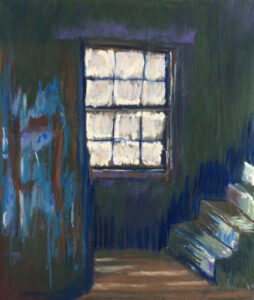
There are many times in the composing process when I am at a standstill. I sit with pencil in hand, poised over the staff paper. Suddenly I find myself sorting through bills and filing letters instead. I tackle the garden, removing vines and poison ivy. My lawn, usually a tangle of clover and violets, is now in neatly mowed rows. I take long rambling walks in the woods with my little dogs. I make myself tea and stare out the window.
Ah, procrastination, I recognize you – my old nemesis! You used to make me doubt my capacity to move forward. Now, you are signal that I am not quite ready to compose and can relax a bit. Procrastination is part of the process.
Still, progress is bumpy and halting. So finally – finally, I take a nap.
Sleep is amazing not only in its restorative power, but in it’s function to leave my brain space to do it’s work. When undistracted by my conscious clutter, my brain organizes, sorts and stores information. More importantly, it somehow simplifies the problem, sweeping away the undergrowth to make the path clearer. I wake rested, perhaps not completely ready to move forward, but on my way.
It has taken me years to develop a good creative practice, and even then it is sometimes hit or miss. I have learned be curious instead of worried, to trust my process (it has, after all, worked for over forty-five years) and to know that my mind continues working on problem while I am doing something else – and top of the list is napping. Dreaming is a special bonus.
In between times, I feed my music constantly; it is voracious. I read, journal and draw on a daily basis. I dance, garden and walk. I take ‘think weeks’ every three or four months – a week in a cabin somewhere, with my books and journals – to think and listen. And I sleep and dream, taking procrastination to bed with me.
Window, pastel by Tina Davidson, © 2018
Critical Acclaim for Davidson’s memoir, Let Your Heart Be Broken“The real music here is in the words, which cascade across these pages wit h a gentle, precise rhythm that is reflected in Davidson’s luminous musical scores. Let Your Heart Be Broken is not the story of a solitary artist obsessed with a craft, but rather of the life that informs the art: a humanistic, worldly spirit, creating beauty amid an often-maddening yet ever-hopeful world.”
h a gentle, precise rhythm that is reflected in Davidson’s luminous musical scores. Let Your Heart Be Broken is not the story of a solitary artist obsessed with a craft, but rather of the life that informs the art: a humanistic, worldly spirit, creating beauty amid an often-maddening yet ever-hopeful world.”
– Broad Street Review
FOLLOW TINA DAVIDSON Facebook Instagram
ORDER Let Your Heart Be Broken
https://www.amazon.com/Let-Your-Heart-BrokenClassical/ dp/1633376966/?fbclid=IwAR3BU-_ UMhxivpy4A3mnPFttpYpiyLae RdD0H HQnsVZwUjYeE7K2Lshse6M
Sign up for Davidson’s Newsletter
Email Contact
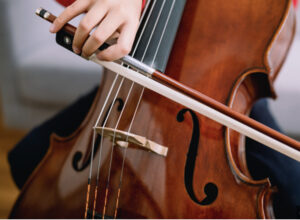 In college, I took up cello in addition to studying composition and piano. At times I studied with Michael Finkle, who, mustached, quirky, was full of joy. Up in a large room on the third floor of the music building we gathered weekly to play cello quartets and octets late into the evening. As a night cap, he turned off the lights and we improvised in the dark.
In college, I took up cello in addition to studying composition and piano. At times I studied with Michael Finkle, who, mustached, quirky, was full of joy. Up in a large room on the third floor of the music building we gathered weekly to play cello quartets and octets late into the evening. As a night cap, he turned off the lights and we improvised in the dark.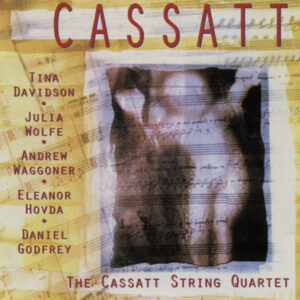 It was Anna Cholakian, the cellist of the Cassatt Quartet, who cemented my love for cello. Delicate and long-haired dark hair, she played with a intensity and passion that belied her small frame. Listen to her play the opening of my string quartet, Cassandra Sings.
It was Anna Cholakian, the cellist of the Cassatt Quartet, who cemented my love for cello. Delicate and long-haired dark hair, she played with a intensity and passion that belied her small frame. Listen to her play the opening of my string quartet, Cassandra Sings. the women in the kitchen of the shelter in evenings. Sitting in a circle in the large blue tiled kitchen, I am quiet during the first couple weeks, and feel my privilege with embarrassment. I am a total novice. Under Zadia’s guidance, I begin to learn. I use her credibility to gain admittance into this world; she is my access card.
the women in the kitchen of the shelter in evenings. Sitting in a circle in the large blue tiled kitchen, I am quiet during the first couple weeks, and feel my privilege with embarrassment. I am a total novice. Under Zadia’s guidance, I begin to learn. I use her credibility to gain admittance into this world; she is my access card.
 August 4
August 4
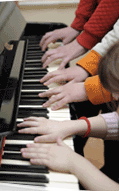 Reading music or symbols, is such a difficult process – the eyes see, the mind decodes and sends a message to the fingers, the ear hears – all the tactile, auditory, sensory abilities working together – and if one those misfires, confusion is overwhelming.
Reading music or symbols, is such a difficult process – the eyes see, the mind decodes and sends a message to the fingers, the ear hears – all the tactile, auditory, sensory abilities working together – and if one those misfires, confusion is overwhelming.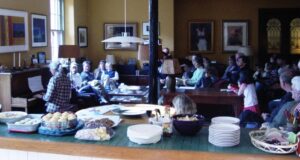 Most importantly, I give them opportunities to experience and claim their own creativity. They are constantly composing music, either at home or in their lesson, notating it as they please. And several times a year, I gather them together in informal settings to perform and celebrate their efforts.
Most importantly, I give them opportunities to experience and claim their own creativity. They are constantly composing music, either at home or in their lesson, notating it as they please. And several times a year, I gather them together in informal settings to perform and celebrate their efforts.